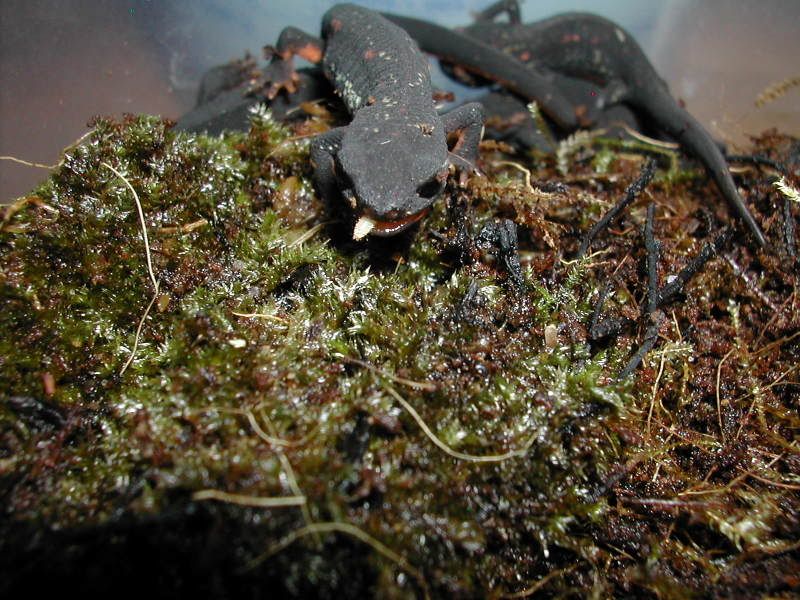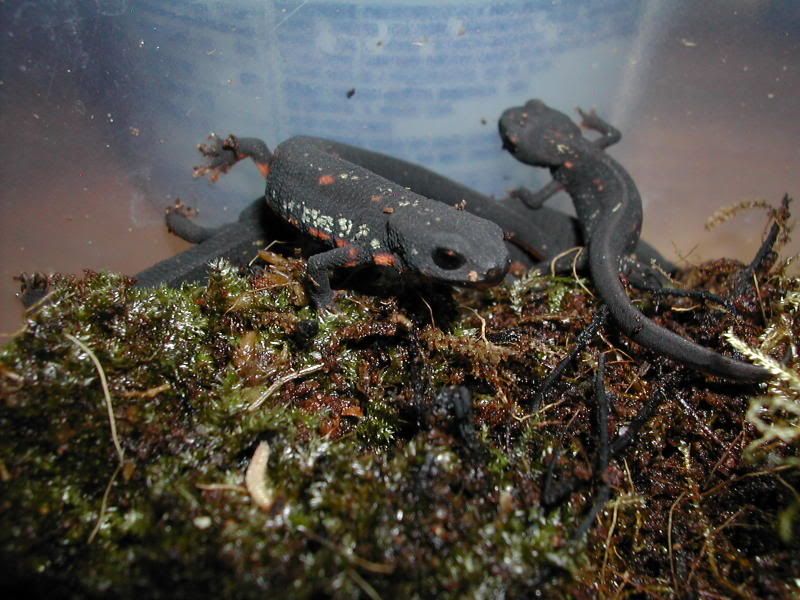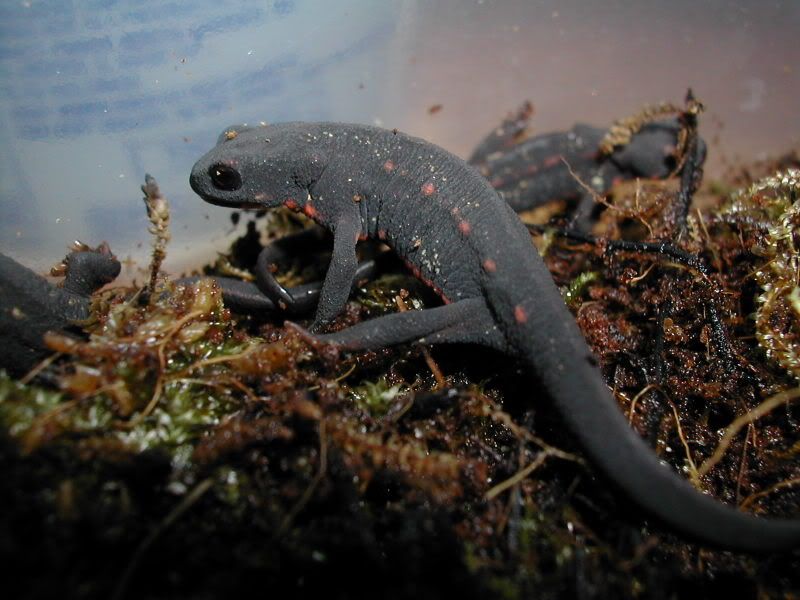J
joseph
Guest
The garden idea sounds great for you. Probably need some mesh netting around a frame as you mentioned. Do you guys have problems with any sort of outdoor predators?(cats, some Japanese equivalent of the raccoon maybe?) I've also wondered if you could set up a huge naturalistic woodland terrarium complete with several food sources and simply release them in their and hope for the best.
I'm currently feeding chopped up redworms. Using the smaller worms cut up into pieces and placed around the tank. I offer springtails also but oddly enough these guys didn't have very much interest in them either(just stare at them and can't make up their mind which one to go for). Maybe I oughtta look into crickets. Mosquito larvae in a small dish were taken also but these are a pain, but they did work as they wriggled enough to attract attention.
On the morph,it is surprising when you compare the photos. In the last photo their is no trace of the color that was originally between the stripes. I can still pick him out as he has more and brighter orange than the rest still on him.
(Message edited by fishkeeper on June 26, 2006)
(Message edited by fishkeeper on June 26, 2006)
I'm currently feeding chopped up redworms. Using the smaller worms cut up into pieces and placed around the tank. I offer springtails also but oddly enough these guys didn't have very much interest in them either(just stare at them and can't make up their mind which one to go for). Maybe I oughtta look into crickets. Mosquito larvae in a small dish were taken also but these are a pain, but they did work as they wriggled enough to attract attention.
On the morph,it is surprising when you compare the photos. In the last photo their is no trace of the color that was originally between the stripes. I can still pick him out as he has more and brighter orange than the rest still on him.
(Message edited by fishkeeper on June 26, 2006)
(Message edited by fishkeeper on June 26, 2006)













